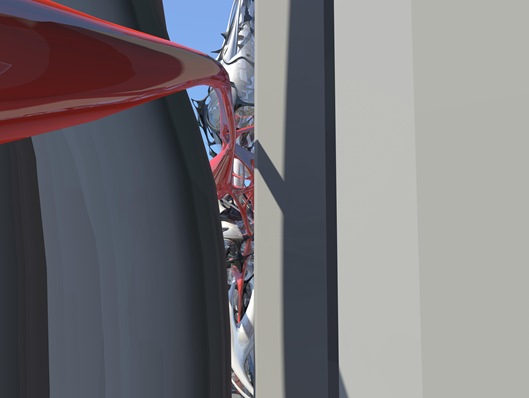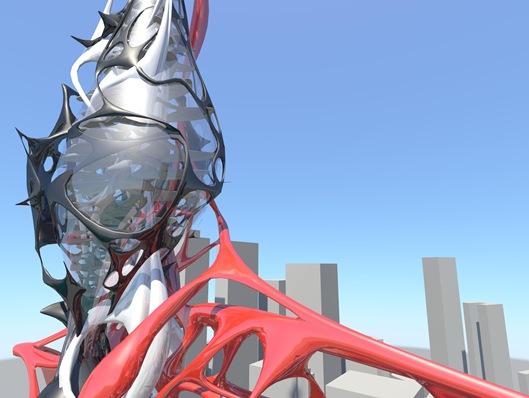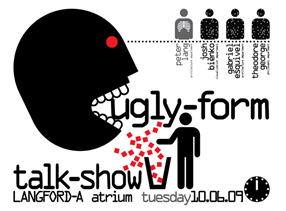An investigations into certain geometries which discuss the asemic as a mode of sensation and seriality in the high-rise typology.
(link to graphics) Based on the pliant and the current economic state (as was similar in the past), certain architectural (urban) conditions are ripe for discussion: the fold (interstitiary connections), sensation, economic/sustainable drivers, ornament/structure, and geometry (as a study of the asemic as we "curve away from deconstructivism").
Infrastructure has to be retooled. In the next few decades, a huge initiative to create large public infrastructure projects will come to pass, creating a paradigm and a precedent. As people detach themselves from the ground, which will, when coupled with large vacant office high-rise space (due to the real estate boom's effect on rental values) create opportunity for the integration, of weaving, of high-speed and low speed (social condensing moments) infrastructure which spans from building to building. Sky lobbies will not be a vertically driven program, but now can be understood as a horizontally derived program as well. Therefore, certain public space accommodations must be made; a programmatic agenda, but a valid agenda none the less. These spaces must drip of movement, a muscled space pulled by (as a static expression) both the vertical and the horizontal.
Infrastructure disintegrates the ground in both directions normal to its surface: infrastructure of the air becomes as crucial as below level. This includes but is not limited by underground parking (as highway systems, which is being developed in Dubai), a lower pedestrian concourse, as well as subway or high-speed rail. Because of the project's site (see below), infrastructure will invade both the earth as well as the bay.
The fold, then, is an argument away from external, urban contradictions, as argued by the deconstructivists, and toward internal "heterogeneous" blends. Blended space, the space that retains several identities, will "fold" upon other space, still maintaining itself while becoming a construct of the whole (the Deleuzean "felt").
This logic (sensibility) is seen in the weaving of infrastructure about a redefined ground (or lack there of), and ties in well with other arguments of the asemic, or asemic geometries. Asemic is defined as "a wordless open semantic form of writing. The word asemic means 'having now specific semantic content.'" at the same time, we understand text (or the glyph) as having certain geometry which can be altered to create the phenomena of seriality. This can be easily understood by selecting a font in adobe products, in which the user is inundated with several hundred fonts, all with a distinct geometry about each character (again, glyph). These geometries, which here are devoid of semantic meaning, argue for other things, like emotion, all defined by some sort of sensibility or aesthetic. And while I say sensibility, as if we all define it for ourselves, there is a broader logic to this: that certain type sets (or styles of type sets) are typically be used for wedding invitation strongly deviate from that which is commonly used for rock concert posters, etc; an argument for geometry and style. If we look into architecture, one can see similar things: the tassel house by Victor Horta is a clear example of the use of graphic (for ornament, disintegration of the edge, etc.). One would argue this as a stylized look, but even so has a level of sensibility and sensation about the space (not to mention the lighting from above, color, etc.).
However, the asemic must be contained within that of the fold, the fluid connection. Geometry is one thing, but as indices weave and are warped about, opportunities for bending the column surface in upon the ground surface and in column to column relationships becomes a compelling argument for ornament and, again, sensation.
Note that these are preliminaries. The next phase of the work is to architecturalize the project. I will be developing a structural logic about the project with professors Holliday and Fry in the very near future which will allow for other extremely important considerations (like floor plates & vertical circulation) to be developed. At this point the project is primarily a study in geometry, and while the project will be developed in other ways, I would not call the current work Architecture, but again a study in geometry and sensation.
interior system

northern perspective | cell graphic


detail at sky lobby

entrance and ground articulation












